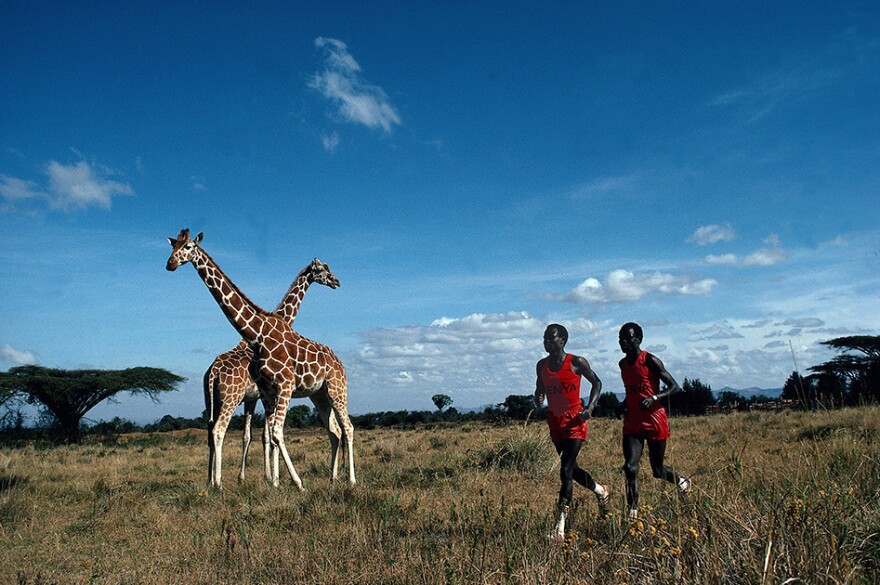If you have a favorite sports photo from the past 60 years, it's very possible Neil Leifer took it: There's Muhammad Ali standing victorious over Sonny Liston ... Or there's Baltimore Colt Alan Ameche plunging over the goal line in 1958 to beat the New York Giants in the so-called Greatest Game Ever Played.
Working for the likes of Sports Illustrated and Time, Leifer has collected many stories with those memorable shots into a new book called Relentless. He says sports journalism is part luck, but, he tells NPR's Robert Siegel, "what separates the top photographers from the run-of-the-mill photographers is that when you get lucky a good photographer doesn't miss."
Interview Highlights

On how he became a sports photojournalist
I was a very good student and of course, my parents, being typical Jewish, Lower East Side, uneducated [parents], they thought they had a budding doctor or lawyer. I really, quite honestly, never knew there was a profession called photojournalism. Photography was a hobby. I was a huge sports fan. I lived and breathed the Brooklyn Dodgers. ... I thought it was just going to be a passing hobby that I grew out of. And one day I woke up and in fact I realized you could make a living doing this.
On his famous shot of Muhammad Ali standing over Sonny Liston (which you can see here)
I have no doubt that when my obit is written one day, the Ali-Liston picture is the picture that everyone is going to see. ... It's without question my best-known picture. I like to think that it's a wonderful photograph, but there's a whole lot of luck in sports photography. And one always sounds very modest when you throw around a word like luck ... but in this case it's really true. I was clearly in the right seat. The photographer between Ali's legs was looking up at his rear end.

On how the Ali-Liston photo has taken on more meaning and significance over time
This picture — which at the end of the century people were calling the greatest sports photo of the century — didn't even make the cover [of Sports Illustrated]. I think it really grew as Ali's legend grew. ... What the picture shows is the young Ali, this handsome, beautiful athlete and as he got older and as his career moved along. This picture is him at his best, at his very best, and it's the way people want to remember him. ... It wasn't considered that important the week that it happened.
On his favorite photograph, which is actually a different Muhammad Ali photo (you can see that photo, titled Ali-Williams (Overhead), here)
I love it because it's the only photograph I've taken in my entire career where I can't see a single thing I would do differently.
On challenges sports photographers face today
The big competition today is not the other photographers. ... Television does such a good job. ... How do you come up with original pictures? When I started out, you put a camera in the hockey net — you were the first person to ever do it. Today, both nets in the Stanley Cup and every game have cameras in [them]. ... Today there are four cameras on the [basketball] backboard. ... You're competing with a visual that people are seeing instantly on television. ...
How do you give people something that's worth waiting for when the magazine comes out four days later when they've seen it instantly when it happened on television? ... By Wednesday when you get your Sports Illustrated, what is there to look forward to? The job that a Sports Illustrated photographer has today is to make it worth waiting for — and I think they do a pretty good job of it ... but it's hard. To be a photographer today at Sports Illustrated is a whole lot harder than it was when I was there.
Copyright 2022 NPR. To see more, visit https://www.npr.org.



